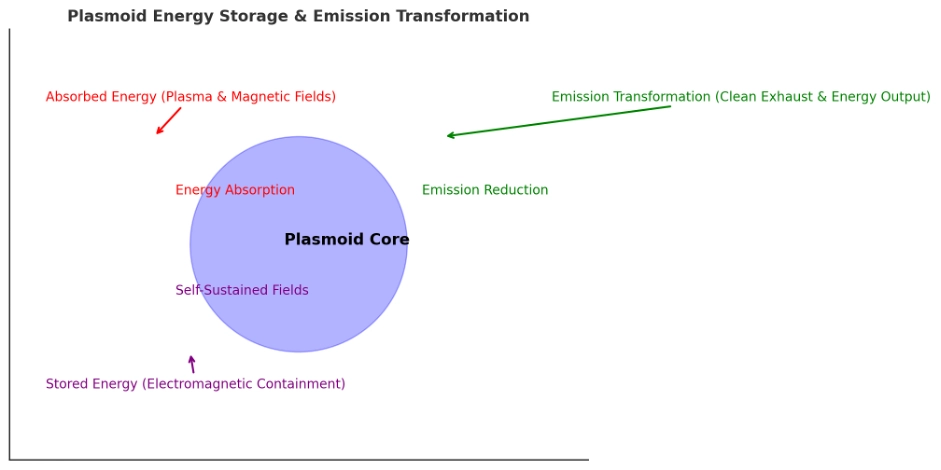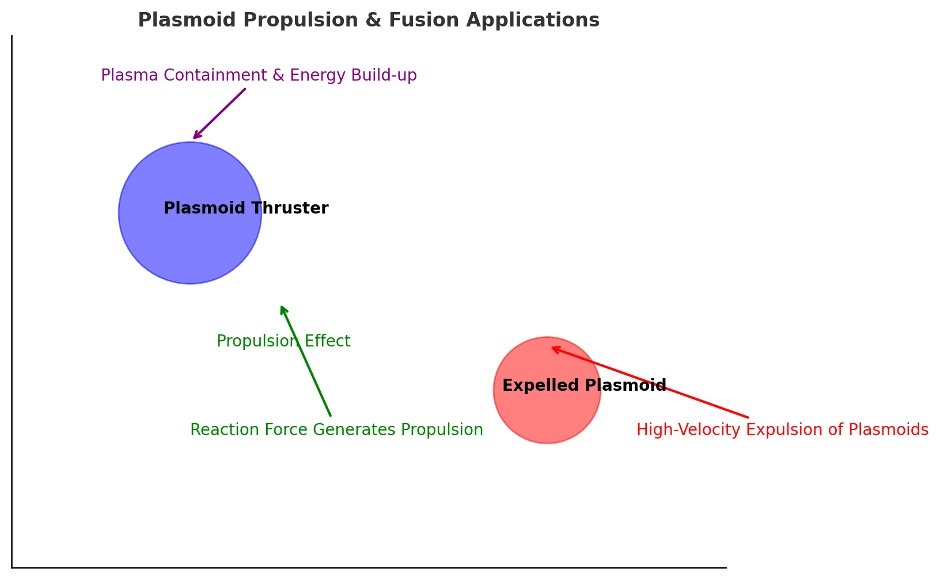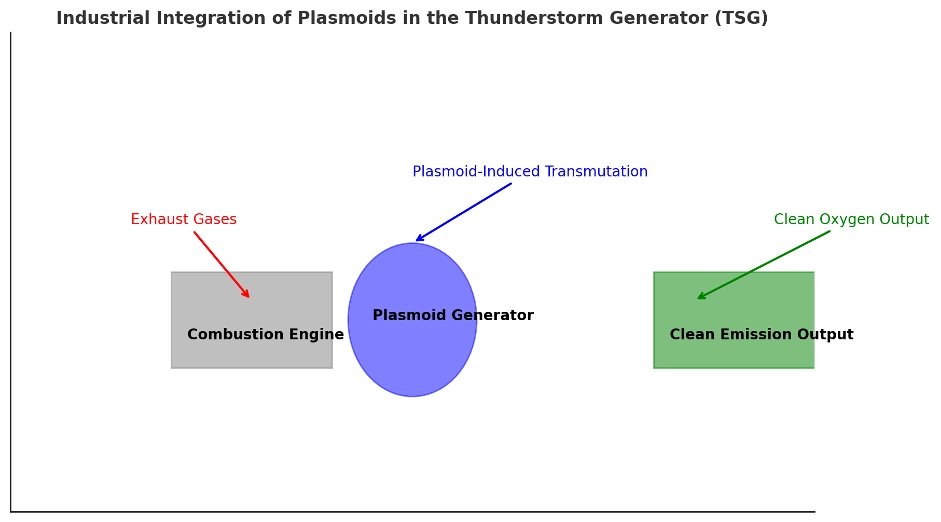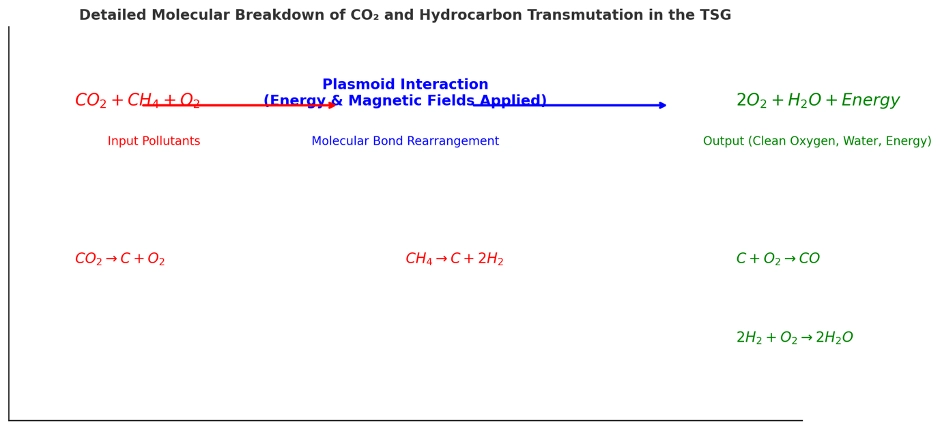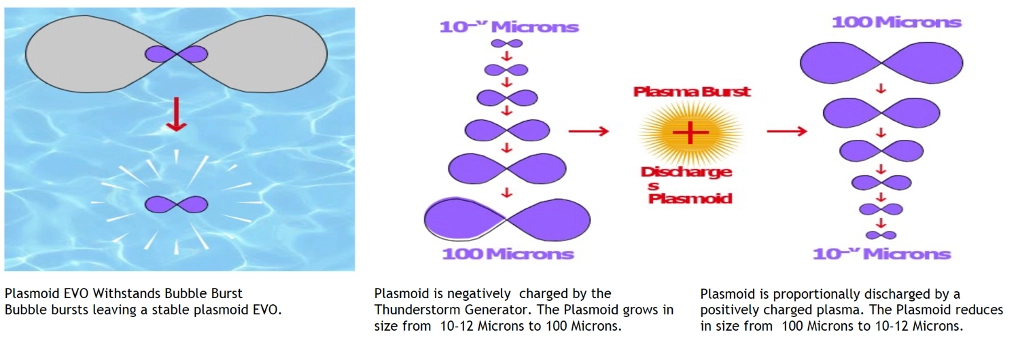
Plasmoids: The Science Behind Plasma-Magnetic Structures
Introduction to Plasmoids
A plasmoid is a self-contained structure of plasma and magnetic fields, capable of sustaining its coherence for extended periods due to the intricate balance between electromagnetic forces, plasma dynamics, and kinetic energy. Plasmoids appear in both natural astrophysical environments and laboratory experiments, playing a crucial role in phenomena such as:
- Ball lightning
- Magnetospheric plasma bubbles
- Solar wind interactions and cometary tails
- Dense plasma focus (DPF) fusion research
- Field-reversed configurations (FRCs) and spheromak formations
Historical Context and Early Research
The term "plasmoid" was coined in 1956 by Winston H. Bostick, a pioneering plasma physicist. He described plasmoids as toroidal plasma-magnetic entities that exhibit self-confinement, rotational stability, and measurable magnetic moments.
In his experiments, Bostick observed that plasmoids exhibited behaviors similar to cosmic structures, leading him to propose that plasmoid interactions could serve as an early model for galaxy formation. These findings suggest that plasmoids are not merely laboratory curiosities but fundamental structures that may be ubiquitous in the universe.
Understanding the Physics of Plasmoids
Plasmoids are governed by the fundamental principles of plasma physics and magnetohydrodynamics (MHD). Their unique properties stem from their ability to self-organize into stable configurations under the influence of their internal electromagnetic fields.
1. Plasma Confinement and Stability
One of the most intriguing properties of plasmoids is their self-confinement, which is achieved through a balance of:
- Magnetic pressure (Lorentz force): Generated by internal currents, creating a restoring force against expansion.
- Plasma pressure: Due to the kinetic motion of charged particles, pushing outward.
- Electromagnetic stabilization: Where twisted magnetic field lines act as a stabilizing force, maintaining toroidal geometry.
In field-free vacuum conditions, a plasmoid will rapidly expand and dissipate due to the lack of external pressure. However, in a confining magnetic field or a plasma medium, it can remain coherent for extended periods.
2. Magnetic Reconnection and Energy Storage
Plasmoids play a crucial role in magnetic reconnection, a process where magnetic field lines rearrange and release stored magnetic energy explosively. This mechanism is observed in:
- Solar flares and coronal mass ejections (CMEs)
- Earth’s magnetosphere (substorms and auroras)
- Fusion energy experiments (tokamaks and stellarators)
Plasmoids can store gigajoules of energy and release it within milliseconds, making them potential candidates for high-density energy applications.
3. Toroidal Structure and Rotation
The toroidal (doughnut-shaped) geometry of plasmoids is a direct result of axial plasma flow and helical magnetic fields. This geometry allows them to:
- Circulate charged particles efficiently
- Maintain structural stability
- Self-regulate through electromagnetic feedback mechanisms
The toroidal confinement principle is also utilized in nuclear fusion reactors like tokamaks, where similar plasma formations are used to sustain high-temperature plasmas for energy generation.
Plasmoids in the Laboratory
Plasmoids have been artificially generated in several experimental setups, including:
1. Dense Plasma Focus (DPF) Devices
- Uses a high-current electrical discharge to create a pinched plasma column, which then breaks apart into plasmoids.
- Generates ultra-high temperatures (~10 million K), making it a candidate for compact nuclear fusion devices.
2. Field-Reversed Configurations (FRCs)
- A plasma confinement scheme where the toroidal magnetic field is reversed, stabilizing the plasma without an external containment vessel.
- Shows potential for fusion energy applications due to its self-sustaining nature.
3. Spheromaks
- Self-contained, force-free plasma structures that can maintain stability without external magnetic coils.
- Used in fusion experiments and astrophysical modeling.
Malcolm Bendall’s Thunderstorm Generator (TSG) and Plasmoid Technology
Malcolm Bendall’s Thunderstorm Generator (TSG) builds upon plasmoid physics, resonance, and implosion dynamics to create an advanced system for energy harvesting and emission reduction.
How TSG Utilizes Plasmoids
1. Generation of Plasmoids
- The TSG creates plasmoids using cavitation bubbles in water.
- These plasmoids pass through a resonator, where their energy state is manipulated.
2. Interaction with Exhaust Gases
- Engine exhaust gases charge the plasmoids, exciting them to a higher energy state.
- Transmutation occurs, modifying the molecular composition of emissions.
3. Reduction of Harmful Emissions
- CO₂ is transmuted into O₂ and clean gases.
- Carbon Monoxide and Nitrous Oxides are significantly reduced.
- Hydrocarbons are broken down into simpler, less harmful compounds.
Experimental Results from TSG
- CO₂ Reduction: 99.56%
- Carbon Monoxide Reduction: 98%
- Sulfur Dioxide Reduction: 84.8%
- Oxygen Output Increased to 20.97%
This shows that plasmoid-based systems can convert harmful exhaust gases into clean air, presenting a revolutionary solution for emission reduction and clean energy generation.
Broader Scientific Implications of Plasmoids
1. Fusion Energy and Advanced Propulsion
- Plasmoids provide a self-stabilizing plasma structure, which is a key challenge in fusion research.
- Potential applications in magneto-inertial fusion (MIF) and directed energy propulsion.
2. Environmental and Industrial Applications
- Emission Control: Transforming industrial waste gases into oxygen-rich emissions.
- Alternative Energy Storage: Using plasmoids as high-density energy carriers.
3. Astrophysics and Cosmic Structures
- Plasmoids may explain galaxy formation models, where similar toroidal structures govern plasma interactions on cosmic scales.
- Magnetic reconnection in plasmoids is critical for understanding solar and space weather phenomena.
The Future of Plasmoid Research
Plasmoids represent one of the most promising frontiers in plasma physics. Their applications span from fusion energy to advanced propulsion, environmental purification, and energy storage.
Key Takeaways:
- Plasmoids are stable plasma-magnetic entities capable of storing and releasing immense energy.
- Their toroidal geometry allows for self-confinement, making them ideal for fusion and energy applications.
- Plasmoid interactions play a role in astrophysical, industrial, and laboratory environments.
- The Thunderstorm Generator (TSG) uses plasmoids to convert exhaust emissions into clean air while improving fuel efficiency.
- Future research in plasmoid physics may unlock new forms of clean, limitless energy production.
With increasing interest from scientists, engineers, and energy pioneers, plasmoids could revolutionize the way we approach energy, propulsion, and environmental sustainability
Plasmoid Energy Storage and Emission Transformation
Here is a diagram illustrating plasmoid energy storage and emission transformation. It highlights how plasmoids absorb, store, and release energy while also playing a crucial role in reducing emissions and transforming exhaust pollutants into clean energy.
Key Features of This Diagram
- Absorbed Energy (Red Arrow) – Plasmoids take in energy from plasma and magnetic fields.
- Stored Energy (Purple Arrow) – The self-contained electromagnetic structure keeps energy stabilized.
- Emission Transformation (Green Arrow) – Plasmoids modify the molecular structure of exhaust gases, reducing CO₂ and other pollutants while increasing oxygen output.
Plasmoid Propulsion and Fusion Applications
Here is a diagram illustrating plasmoid propulsion and fusion applications. It demonstrates how plasmoids can be used as a propulsion system or for energy release in fusion applications.
Key Features of This Diagram
- Plasmoid Thruster (Blue Circle)
- Represents a confined plasmoid energy source.
- Plasma containment and energy build-up occur within this structure (Purple Arrow).
- Expelled Plasmoid (Red Circle)
- High-velocity ejection of plasmoids generates thrust (Red Arrow).
- Reaction force provides propulsion for spacecraft or other advanced systems.
- Propulsion Effect (Green Arrow)
- The reaction force from plasmoid expulsion generates momentum, enabling movement.
- This principle is explored for magneto-plasma propulsion and fusion applications.
Potential Applications of Plasmoid Propulsion
- Advanced Space Propulsion – Plasmoid-based thrusters could revolutionize space travel, offering higher efficiency than traditional ion drives.
- Fusion Energy – The ability of plasmoids to self-contain and release energy efficiently makes them strong candidates for next-gen fusion reactors.
Industrial Integration of Plasmoids in the Thunderstorm Generator (TSG)
Here is a diagram illustrating the industrial integration of plasmoids in the Thunderstorm Generator (TSG). This schematic showcases how the TSG processes exhaust gases, applies plasmoid-induced transmutation, and outputs cleaner emissions.
Key Features of This Diagram
- Combustion Engine (Gray Rectangle)
- Produces exhaust gases (CO₂, CO, NOₓ, hydrocarbons).
- These emissions are directed into the Plasmoid Generator.
- Plasmoid Generator (Blue Circle)
- Uses plasmoids to alter molecular structures of exhaust gases.
- Initiates molecular transmutation, breaking down pollutants into cleaner byproducts.
- Clean Emission Output (Green Rectangle)
- Converts harmful gases into oxygen-rich emissions.
- Reduces pollutants while increasing efficiency and sustainability.
How This Benefits Industry
- Significant CO₂ reduction in factories, transport, and power plants.
- Retrofittable technology—can be added to existing industrial setups.
- Supports global emission targets, making industries more environmentally compliant.
Molecular Breakdown of CO2 and Hydrocarbons in the Thunderstorm Generator
Here is a reaction pathway diagram illustrating how the Thunderstorm Generator (TSG) breaks down CO₂ and hydrocarbons into clean oxygen, water, and usable energy using plasmoid-induced molecular transmutation.
Key Features of This Diagram
- Input Pollutants (Red Text)
- Combustion engines emit CO₂ and Hydrocarbons (HC), contributing to air pollution.
- Plasmoid Reaction (Blue Text)
- The TSG uses high-energy plasmoids to break molecular bonds and reorganize atomic structures.
- Molecular transmutation occurs, transforming pollutants into beneficial compounds.
- Clean Output (Green Text)
- Oxygen (O₂) and water (H₂O) are released, making the emissions safer for the environment.
- Some of the converted energy can be redirected to improve efficiency.
Scientific Impact
- Eliminates harmful emissions without requiring expensive chemical catalysts.
- Reduces CO₂ and Hydrocarbons to near zero, making combustion engines more sustainable.
- Applies plasmoid-induced energy conversion, unlocking new potential for zero-emission technology.
Detailed Molecular Breakdown of CO2 and Hydrocarbon Transmutation in the TSG
Here is a detailed molecular breakdown of how CO₂ and hydrocarbons (like CH₄) undergo transmutation in the Thunderstorm Generator (TSG) using plasmoid interactions.
Key Chemical Reactions Illustrated
- Input Pollutants (Red Text)
- CO₂ → C + O₂ (Carbon dioxide dissociates into carbon and oxygen)
- CH₄ → C + 2H₂ (Methane splits into carbon and hydrogen gas)
- Plasmoid Interaction (Blue Text)
- High-energy plasmoid fields break molecular bonds in CO₂ and hydrocarbons.
- Rearranges atoms to create less harmful compounds.
- Output Products (Green Text)
- C + O₂ → CO (Carbon reacts with oxygen, forming carbon monoxide instead of CO₂).
- 2H₂ + O₂ → 2H₂O (Hydrogen reacts with oxygen, producing water).
- Excess O₂ is released, making the emissions cleaner.
Scientific Impact
- Reduces CO₂ emissions at a molecular level, preventing harmful greenhouse gases.
- Produces clean byproducts (oxygen and water), improving air quality.
- Increases engine efficiency by utilizing transmuted energy from the reaction.

